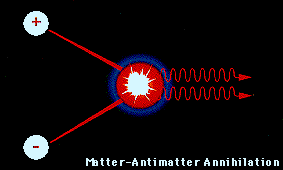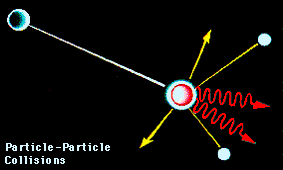So how are you guys? I am here again with a new episode of Simple Question series. In this episode I will be talking about antimatter and some of its mind blowing features and incredible mysteries. As always, get ready for a journey to the minute physical world of logic which seem illogical, along with a tadka of my philosophy.
So let's begin!
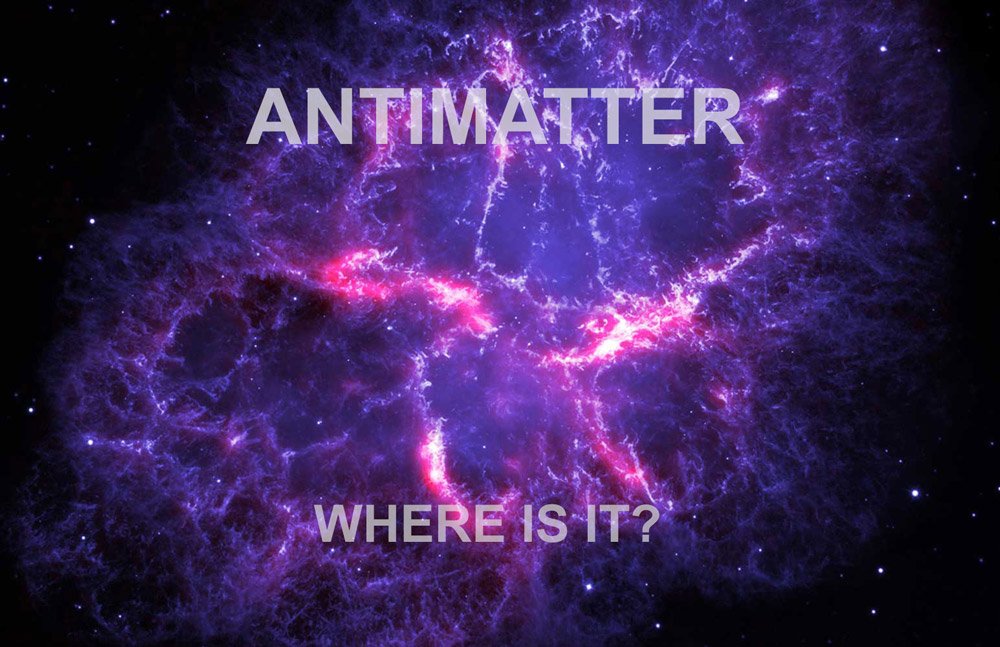

“I think that the discovery of antimatter was perhaps the biggest jump of all the big jumps in physics in our century.”
--- Werner Heisenberg
Physics and Math are very good friends. Physics depends on Math to express the laws of Physics and Math relies on Physics for much of its subject matter. In many of the cases when our intuition becomes an obstacle in understanding the physical world, it is better to rely on Math to guide us. For example, in understanding the bizarre illogical behaviour of quantum particles. So, we can trust that Math describes reality more accurately than our intuition. But not always. Sometimes math makes some weird predictions that make no physical sense. Say for example, you are designing a missile launch system. So, you have to calculate the correct projectile so that it hits the right position. For that you need to solve an equation that looks like this: y = ax2 + bx + c to figure out the shooting velocity and launching angle. As the equation has an x2 in it, there are going to be two solutions for the point where the missile will hit the ground. Here, one solution will be the physical one, showing just the right manner in which the missile will be delivered to the correct point. The other solution, however, will give you a nonsensical answer: It will tell you that initial velocity should be negative, which means you have to shoot the missile backwards and directly at the ground (not in the air). This is a correct mathematical solution, but not a physical one so we have to discard it.
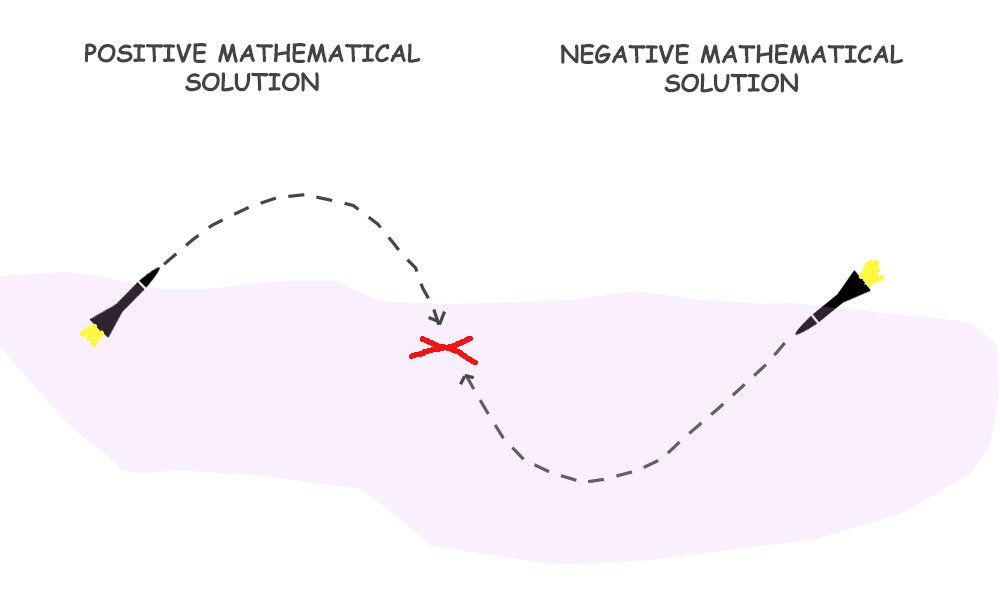
Missile launched according to the two mathematical solutions.
So, in most of the cases we ignore those mathematical solutions which seem illogical in the physical sense. Physicists have been used to this and discard unphysical solutions as mathematical artifacts that are not real insights into our universe.
But be careful, because some of those artifacts might be real, and Nobel Prizes maybe in the wait.
An English physicist, Paul Dirac, in 1928, was working on equations to describe the quantum behaviour of electrons moving at very high speeds. That was the time in physics had blown our naive perception of the universe, not once but twice. One was quantum mechanics which produced such results which led us to rethink the nature of reality at the lowest levels. And the other one was the famous Special Relativity theory which was complex enough to bring a revolution in the whole scientific study.
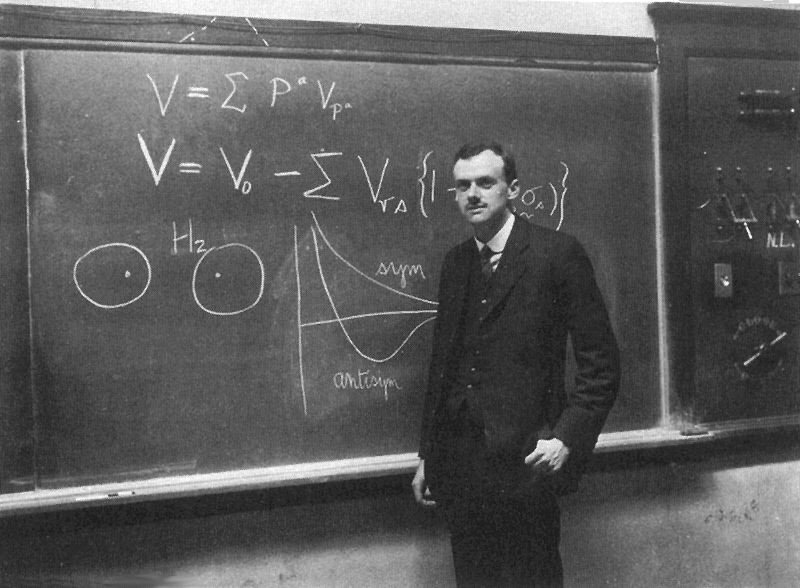
Paul Dirac
Dirac was also very much influenced by these mind-blowing theories (Quantum Mechanics and Special Relativity) and by using them he developed an equation (called Dirac Equation) describing the behaviour of fast moving electrons (relativistic version of the Schrodinger's wave equation for electrons) that was really amazing and seemed to work except for one little problem.
He found that his equations worked perfectly for the everyday negatively charged electrons, but they also worked for electrons with the opposite electric charge. That means, his equation suggested that the laws of physics would work just as well for a positively charged electron, which he called antielectron. This antielectron was similar to an electron in many ways: it had the same mass and had the same quantum properties. But it had an opposite electric charge. No such particle had ever been observed before.
Some physicist might have been tempted to disregard this result as a mathematical artifact or a negative solution. But Dirac was intrigued as those were no physical laws to prohibit the existence of antielectrons. Looking at his equations he even went further and propose that all particles have a corresponding antiparticle. Hence, he predicted not only a new single particle but a whole new kind of particles. This was really an incredible idea and hard to accept.
But in 1932, a physicist Carl D. Anderson, discovered the real antielectrons and named them 'positrons'. This proved the proposal of Dirac. Dirac received on Nobel Prize in physics in 1933 and Anderson got the prize in 1936. Even a complete periodic table of antimatter was proposed by Charles Janet in 1929. At present we have discovered an anti-version of almost every subatomic particle.
The idea of negative matter antimatter was not very much new these ideas appeared, in some of the past theories as well.
William Hicks in the 1880s, proposed the possibility of matter with negative gravity. And in the next decade Karl Pearson suggested the existence of "squirts" from where 'aether' flows into "sinks". The squirts represented normal matter, while the sinks represented negative matter.
The use of the term 'antimatter' was first done by Arthur Schuster in his writing for Nature in 1898, where he coined the term. He speculated the existence of antiatoms and also hypothesized the existence of a whole antimatter solar systems. He also discussed the possibility of matter and antimatter annihilating each other. His ideas were not a serious theoretical proposal, but a mere speculation. He also believed that antimatter should possess ‘negative gravity’. [1]
So, Dirac's ideas were not very much new. But his ideas had some mathematical proofs, which made them more credible.
An antiparticle is just an opposite twin of the original one, but it has some other differences as well. The antiparticle twin is not just different in electric charge but also in charges of the weak and strong nuclear forces.
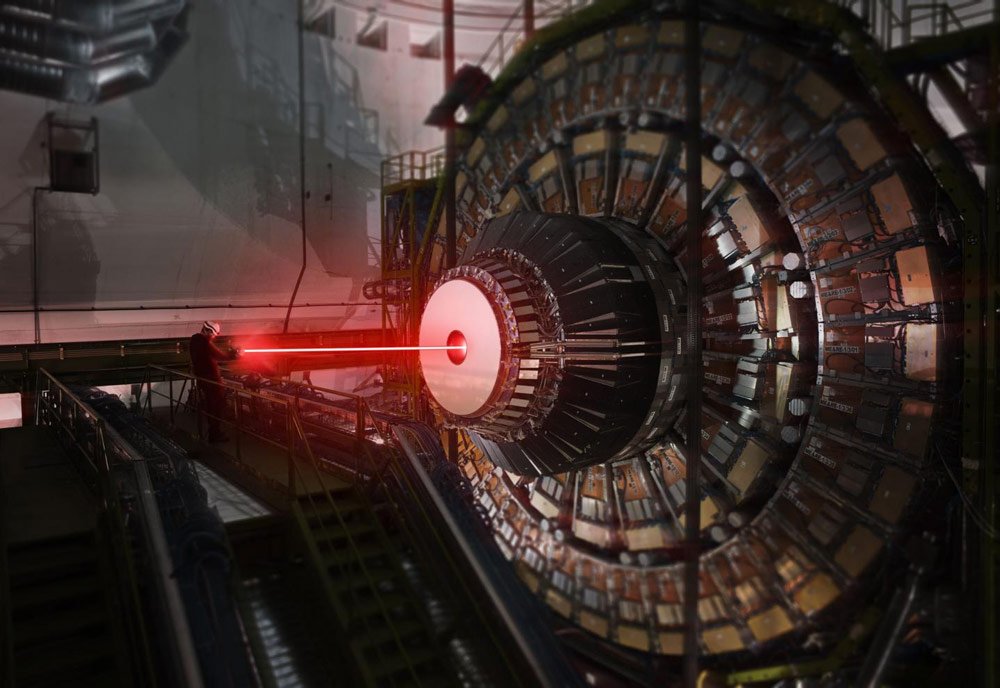
Large Hadron Collider at CERN | CERN
In fact, scientists have observed antiparticles many times. At present, nearly every charged particle we know of has been confirmed to have an antiparticle. Antiparticles can be easily formed by particle collisions. At CERN, annually a few picograms of antiparticles are produced. Cosmic rays from space colliding with the atmosphere also sometimes contain antiparticles.
Antiparticles a really good example of the symmetry that we find in physics even at the lowest level. You may imagine particles and antiparticles as two faces of the same coin. Well, copies of particles also happened to exist in different ways: each of the subatomic particles also have two heavier cousins. For example, the electron has the muon and the tau particles which have nearly identical quantum properties (like charge and spin) as an electron but have more mass. So we see, electron has is two heavier cousins and an antiparticle. And of course, the heavier cousins, tau and muon have their anti-versions as well.
And yes, there is no limit to it. According to a speculative theory called 'supersymmetry', every particle has yet another kind of mirror, “a superparticle”, that is very much similar to the original particle (same mass, charge etc.) but has different quantum spin. So we see the particles of matter are full of twins, cousins and even clones.
But these raise even more questions: Why do these twin version of particles exist at all? Why don't we observe them in our day to day life?
What will Happen if Particle and Antiparticle Come Close to Each Other?

Annihilation of Matter and Antimatter | Gamespot

“If an alien lands on your front lawn and extends an appendage as a gesture of greeting, before you get friendly, toss it an eightball. If the appendage explodes, then the alien was probably made of antimatter. If not, then you can proceed to take it to your leader.”
--- Neil deGrasse Tyson
In science fiction we see many incredible physics born out of the imagination of the writer but most of the things (like time travel, teleportation, faster than light travel etc.) cease to be exactly true in real life. Like in science fictions, it is told that when a particle touches its antiparticle they explode. That sounds ridiculous, doesn't it?
But, it's not that fictional. Actually it turns out to be true. When the twins (particle and antiparticle) meet each other, they don't just hug and get cozy, they destroy each other completely (villainous!). The two particles vanish and their masses are completely converted into high energy carrying particles like photon or gluon, without leaving a trace of original particles. This process is called 'Annihilation'. This happens not just with electron and positron, but also when quarks collide with antiquarks or muons meet anti-muons. [2]
The energy released is very high as mass stores a lot of energy. Einstein's famous equation E=mc2 suggests that mass and energy are interrelated and interconvertible. We must note here that the speed of light, 'c' which is already a large value (300 million m/s), is squared! So a little bit of mass carries a huge amount of energy. If one gram of antiparticles is combined with a gram of normal particles, it would release more than 40 kilotonnes of explosive force, which is more than twice as powerful as atomic bombs used in World War II.
Well, the particles don't actually touch each other while annihilation. They are not actually tiny little ball (as we sometimes imagine), but quantum mechanical objects. They don't have any surfaces. When, the two particles (particle and antiparticle) come close to each other, you can think of their quantum mechanical futures as merging and the two particles disappearing into another form of energy (most likely photons). From this energy are the types may also emerge. This is exactly what happens when we smash every day particles at the Large Hadron Collider to create new kind of particles.
This actually puts up the point that, all particle collision result in the annihilation of original particles into new particles. But what's the difference in the interaction of particles and antiparticles is that they are mirror versions of each other, with opposite charge and other forces. So they are very much attractive to each other and hence are more likely to collide. Also they perfectly complement each other, so they annihilate into something neutral (like photons) and don't create new particles.
The other things that should be kept in mind is that when particles interact (collide) certain things are conserved. Like we have observed that electric charge can never be created out of nothing nor it can be destroyed. The total electric charge of a particle before and after collision has to be the same. Why is that necessary? We don't actually know. We observed this pattern in real life experiments and incorporated these rules in our theories.
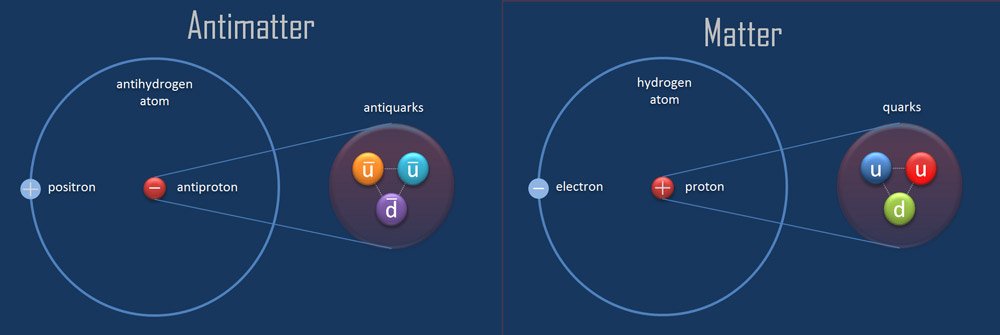
Structure of Antiatom vs Structure of Atom | Nuclear Power
When an electron and positron come close to each other, their opposite charge (+1 and -1) pull them towards each other and after they collide the opposite electric charges perfectly cancel out each other allowing all their traces of existence to disappear completely.
This won't happen if we smoosh to other particles with same charge. For example, if we smoosh two electrons having charge (-1 and -1) and as a whole a charge of -2 has to be conserved, which won't allow total annihilation of the electrons and may produce some new charged particles.
Well, electric charge is not the only thing that has to be conserved. You may ask, if we need two particles with equal and opposite charges, can an electron with charge -1 and an anti-muon with charge +1 annihilate? Well, the answer is you cannot. There is yet another law in our universe about smooshing, that says that "electronness" and "muonness" (basically quantum properties) has to be conserved. We can't destroy an electron with a non-electron. It only works for its antiparticle, positron. Same is the rule for its cousins, muon and tau.
Why does the universe have these weird rules? We don't know. Maybe one day will find that these rules are a consequence of some simpler theory of particles. Maybe antiparticles can give us some clues about that.
Antimatter and Possibility of Our Anti-versions

An Earth made of Antimatter, Possible?
We saw, antiparticles are identical to normal particles and can annihilate each other completely turning the whole mass into energy. But it gets even more interesting than that.
It turns out that, just like regular particles, antiparticles can assemble themselves to form anti-version of more complex particles like protons and neutrons. For example, if we take two anti-down quarks and one anti-up quark and combine them we can potentially make an anti-neutron. This antineutron will still be electrically neutral just like a regular neutron, but its insides will be made of antiparticles. Again we can make an anti-proton by combining two anti-up quarks and one anti-down quark, which will be similar to a proton but with the negative charge.
After this we can go one step ahead and create more complex structures. Once we have antineutrons, antiprotons and antielectrons, we can potentially make antiatoms! A positron (antielectron) and a negative proton will be just like the regular versions except with charges reversed. If we bring an antielectron and an antiproton together, the antielectron will orbit around antiproton and we will get an antihydrogen! And in the similar way if we assemble enough antiparticles we can make anti-version of anything. For example, if we combine two antihydrogens with one anti-oxygen, we will probably get anti-H2O or anti-water. This anti-water will have the same feel and physical features like regular water. But if we drink it, we will explode in big flashes of energy which will not be that refreshing.

Anti-Water!!
Again if you go further, we can find an anti-version of anything, and even of protein and DNA. And if that happens you may find and anti-Earth and an anti-you who will look just like yourself except that anti-he/anti-she will be made of antimatter [taken into account the probability of anything in infinite universe]. That would be incredible, wouldn't it?
In fact, there is nothing fundamentally "mattery" about our kind of matter and there's nothing "antimattery" about antimatter. If we were somehow made of antiparticles, then we would have called that 'matter' and the regular ones 'antimatter'. These are just arbitrary names and nothing else.
But, all this discussion about antimatter raises one question: Where is all this antimatter?
The Conclusion
So we see how incredible is the physics of our universe. Of course as everything has been created out of nothing, and to conserve that nothingness it needed antimatter. But, can we have something like anti-energy which can eat up regular energy? Well, nothing has been found similar to that. Energy is considered neutral, and it is also speculated that it leaks out in higher dimensions (we'll discuss about these in detail in some other episodes). We haven't observed anti-photons, and anti-version of light, though it sounds interesting.
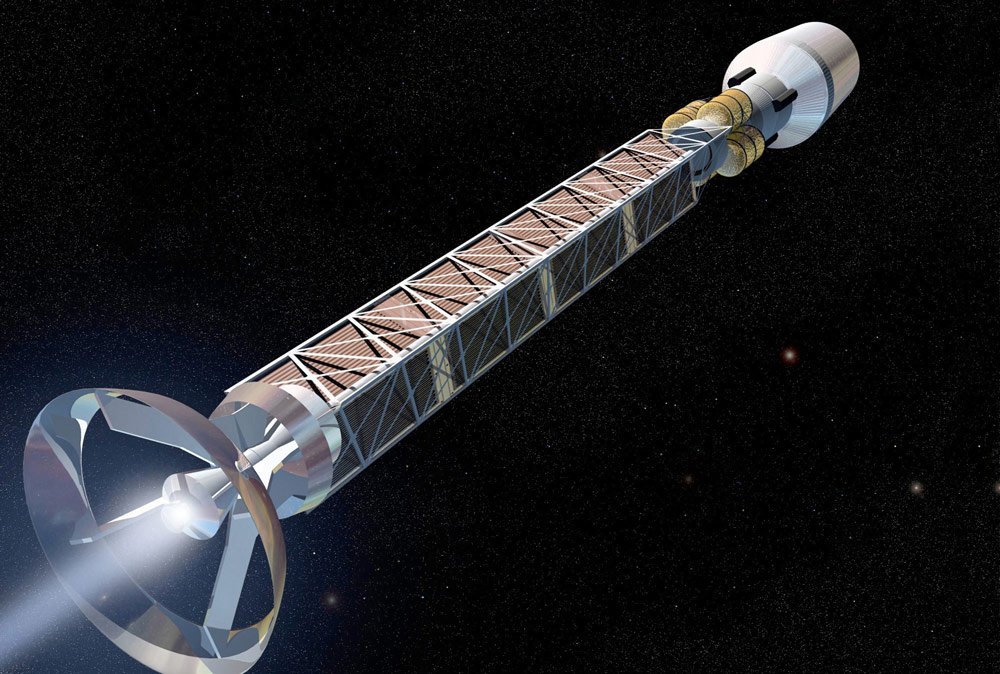
Antimatter Spacecraft
Now coming back to anti-matter. Energy stored in matter and antimatter is very high. We can generate humongous amount of energy from antiparticle annihilation. This leads our engineers to speculate that this energy can be used to power spacecraft. Antimatter powered spacecraft can be an efficient way to explore this vast and mysterious universe. However, NASA cautions there is a huge catch with this idea: It costs around $100 billion for a milligram of antimatter. Again it requires a huge amount of energy to create antimatter, more than what we can get back from an antimatter reaction. So, at present its not economically and technically viable implement this idea. [3]
But this haven't stopped NASA and other agencies from working to improve the technology to make antimatter spacecraft possible. It is, however, speculated that it will be possible to use antimatter in about 40-60 years in the future.

“God created... light and dark, heaven and hell; science claims the same thing as religion, that the Big Bang created everything in the universe with an opposite, including matter itself, antimatter.”
--- Dan Brown
Well there are many more mysteries about antimatter: Why do we have Universe not Anti-Universe? Where can we find anti-matter? Do neutral matters have an anti-version? Is time dimension reversed for Antimatter? How will gravity work on Anti-Matter?
We’ll answer all these awesome questions in next episode. Till then stay happy, stay safe and beware of anti-matter.
Image Source :
All the non cited images are either from Pixabay.com, Pexels.com, or Wikipedia.com and are available for Reuse under Creative Commons Licenses or created by me.
References
[1] - https://en.wikipedia.org/wiki/Antimatter
[2] - https://en.wikipedia.org/wiki/Annihilation
[3] - https://www.livescience.com/32387-what-is-antimatter.html
[•] - Jorge Cham and Daniel Whiteson (2017) : We Have No Idea
Original Article
What Is Antimatter? Why Is Our Universe Entirely Made Of Matter?
Previous Episodes of the Series
- Simple Question #1 - Why do we Dream? What is its purpose?
- Simple Question #2 - What is Life? Why does it exist at all?
- Simple Question #3 - How big is the Universe? What is its Shape?
- Simple Question #4 - Should we eat Meat? Why and Why Not?
- Simple Question #5 - What is Time? Will it ever stop or reverse?
- Simple Question #6 - Do we all feel Time the same way? Can we travel back in Time?
- Simple Question #7 - What is Space? Is It Really a Static Infinite Void?
- Simple Question #8 - Does Space have any overall Shape? Is it Quantized?
- Simple Question #9 - How Animals See the World? Do They Experience the Same World?

For more discussion on this topic (or anything related to science), please join us on steemSTEM. SteemSTEM is a community driven project which seeks to promote well written/informative Science Technology Engineering and Mathematics postings on Steemit. More information can be found on the @steemstem blog.
Follow me @nitesh9



--- niteshp.com ---

